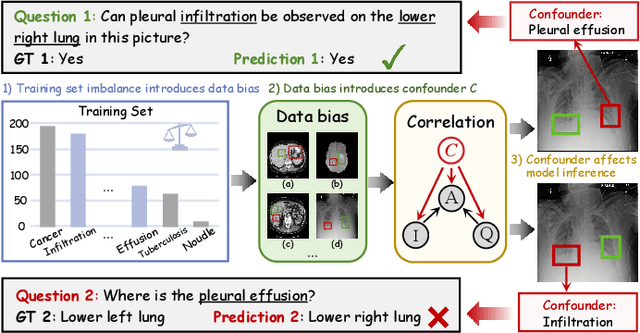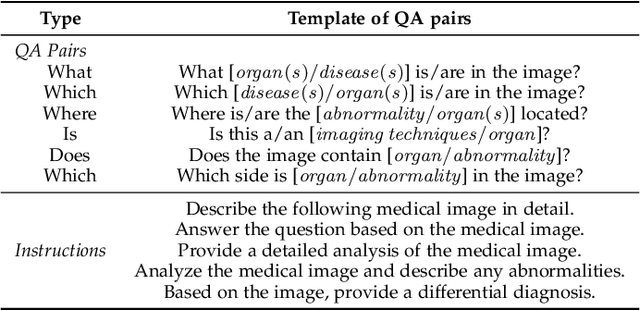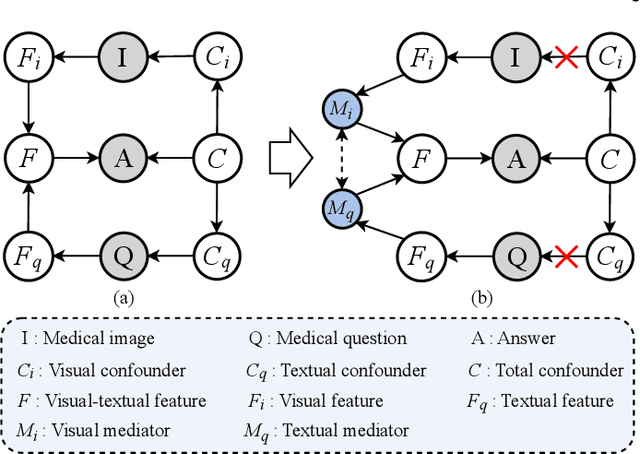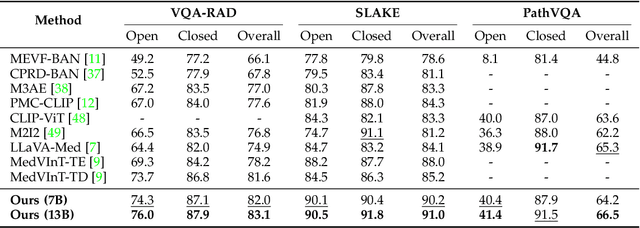Weijie Wang
Organ-Agents: Virtual Human Physiology Simulator via LLMs
Aug 20, 2025Abstract:Recent advances in large language models (LLMs) have enabled new possibilities in simulating complex physiological systems. We introduce Organ-Agents, a multi-agent framework that simulates human physiology via LLM-driven agents. Each Simulator models a specific system (e.g., cardiovascular, renal, immune). Training consists of supervised fine-tuning on system-specific time-series data, followed by reinforcement-guided coordination using dynamic reference selection and error correction. We curated data from 7,134 sepsis patients and 7,895 controls, generating high-resolution trajectories across 9 systems and 125 variables. Organ-Agents achieved high simulation accuracy on 4,509 held-out patients, with per-system MSEs <0.16 and robustness across SOFA-based severity strata. External validation on 22,689 ICU patients from two hospitals showed moderate degradation under distribution shifts with stable simulation. Organ-Agents faithfully reproduces critical multi-system events (e.g., hypotension, hyperlactatemia, hypoxemia) with coherent timing and phase progression. Evaluation by 15 critical care physicians confirmed realism and physiological plausibility (mean Likert ratings 3.9 and 3.7). Organ-Agents also enables counterfactual simulations under alternative sepsis treatment strategies, generating trajectories and APACHE II scores aligned with matched real-world patients. In downstream early warning tasks, classifiers trained on synthetic data showed minimal AUROC drops (<0.04), indicating preserved decision-relevant patterns. These results position Organ-Agents as a credible, interpretable, and generalizable digital twin for precision diagnosis, treatment simulation, and hypothesis testing in critical care.
INTENTION: Inferring Tendencies of Humanoid Robot Motion Through Interactive Intuition and Grounded VLM
Aug 06, 2025Abstract:Traditional control and planning for robotic manipulation heavily rely on precise physical models and predefined action sequences. While effective in structured environments, such approaches often fail in real-world scenarios due to modeling inaccuracies and struggle to generalize to novel tasks. In contrast, humans intuitively interact with their surroundings, demonstrating remarkable adaptability, making efficient decisions through implicit physical understanding. In this work, we propose INTENTION, a novel framework enabling robots with learned interactive intuition and autonomous manipulation in diverse scenarios, by integrating Vision-Language Models (VLMs) based scene reasoning with interaction-driven memory. We introduce Memory Graph to record scenes from previous task interactions which embodies human-like understanding and decision-making about different tasks in real world. Meanwhile, we design an Intuitive Perceptor that extracts physical relations and affordances from visual scenes. Together, these components empower robots to infer appropriate interaction behaviors in new scenes without relying on repetitive instructions. Videos: https://robo-intention.github.io
Learning to Recover: Dynamic Reward Shaping with Wheel-Leg Coordination for Fallen Robots
Jun 05, 2025Abstract:Adaptive recovery from fall incidents are essential skills for the practical deployment of wheeled-legged robots, which uniquely combine the agility of legs with the speed of wheels for rapid recovery. However, traditional methods relying on preplanned recovery motions, simplified dynamics or sparse rewards often fail to produce robust recovery policies. This paper presents a learning-based framework integrating Episode-based Dynamic Reward Shaping and curriculum learning, which dynamically balances exploration of diverse recovery maneuvers with precise posture refinement. An asymmetric actor-critic architecture accelerates training by leveraging privileged information in simulation, while noise-injected observations enhance robustness against uncertainties. We further demonstrate that synergistic wheel-leg coordination reduces joint torque consumption by 15.8% and 26.2% and improves stabilization through energy transfer mechanisms. Extensive evaluations on two distinct quadruped platforms achieve recovery success rates up to 99.1% and 97.8% without platform-specific tuning. The supplementary material is available at https://boyuandeng.github.io/L2R-WheelLegCoordination/
Revisiting Depth Representations for Feed-Forward 3D Gaussian Splatting
Jun 05, 2025Abstract:Depth maps are widely used in feed-forward 3D Gaussian Splatting (3DGS) pipelines by unprojecting them into 3D point clouds for novel view synthesis. This approach offers advantages such as efficient training, the use of known camera poses, and accurate geometry estimation. However, depth discontinuities at object boundaries often lead to fragmented or sparse point clouds, degrading rendering quality -- a well-known limitation of depth-based representations. To tackle this issue, we introduce PM-Loss, a novel regularization loss based on a pointmap predicted by a pre-trained transformer. Although the pointmap itself may be less accurate than the depth map, it effectively enforces geometric smoothness, especially around object boundaries. With the improved depth map, our method significantly improves the feed-forward 3DGS across various architectures and scenes, delivering consistently better rendering results. Our project page: https://aim-uofa.github.io/PMLoss
Advancing Multimodal Reasoning: From Optimized Cold Start to Staged Reinforcement Learning
Jun 04, 2025



Abstract:Inspired by the remarkable reasoning capabilities of Deepseek-R1 in complex textual tasks, many works attempt to incentivize similar capabilities in Multimodal Large Language Models (MLLMs) by directly applying reinforcement learning (RL). However, they still struggle to activate complex reasoning. In this paper, rather than examining multimodal RL in isolation, we delve into current training pipelines and identify three crucial phenomena: 1) Effective cold start initialization is critical for enhancing MLLM reasoning. Intriguingly, we find that initializing with carefully selected text data alone can lead to performance surpassing many recent multimodal reasoning models, even before multimodal RL. 2) Standard GRPO applied to multimodal RL suffers from gradient stagnation, which degrades training stability and performance. 3) Subsequent text-only RL training, following the multimodal RL phase, further enhances multimodal reasoning. This staged training approach effectively balances perceptual grounding and cognitive reasoning development. By incorporating the above insights and addressing multimodal RL issues, we introduce ReVisual-R1, achieving a new state-of-the-art among open-source 7B MLLMs on challenging benchmarks including MathVerse, MathVision, WeMath, LogicVista, DynaMath, and challenging AIME2024 and AIME2025.
ZPressor: Bottleneck-Aware Compression for Scalable Feed-Forward 3DGS
May 29, 2025Abstract:Feed-forward 3D Gaussian Splatting (3DGS) models have recently emerged as a promising solution for novel view synthesis, enabling one-pass inference without the need for per-scene 3DGS optimization. However, their scalability is fundamentally constrained by the limited capacity of their encoders, leading to degraded performance or excessive memory consumption as the number of input views increases. In this work, we analyze feed-forward 3DGS frameworks through the lens of the Information Bottleneck principle and introduce ZPressor, a lightweight architecture-agnostic module that enables efficient compression of multi-view inputs into a compact latent state $Z$ that retains essential scene information while discarding redundancy. Concretely, ZPressor enables existing feed-forward 3DGS models to scale to over 100 input views at 480P resolution on an 80GB GPU, by partitioning the views into anchor and support sets and using cross attention to compress the information from the support views into anchor views, forming the compressed latent state $Z$. We show that integrating ZPressor into several state-of-the-art feed-forward 3DGS models consistently improves performance under moderate input views and enhances robustness under dense view settings on two large-scale benchmarks DL3DV-10K and RealEstate10K. The video results, code and trained models are available on our project page: https://lhmd.top/zpressor.
Collection: Datasets from AFAR Challenge
May 11, 2025



Abstract:This paper presents a comprehensive real-world and Digital Twin (DT) dataset collected as part of the Find A Rover (AFAR) Challenge, organized by the NSF Aerial Experimentation and Research Platform for Advanced Wireless (AERPAW) testbed and hosted at the Lake Wheeler Field in Raleigh, North Carolina. The AFAR Challenge was a competition involving five finalist university teams, focused on promoting innovation in UAV-assisted radio frequency (RF) source localization. Participating teams were tasked with designing UAV flight trajectories and localization algorithms to detect the position of a hidden unmanned ground vehicle (UGV), also referred to as a rover, emitting wireless probe signals generated by GNU Radio. The competition was structured to evaluate solutions in a DT environment first, followed by deployment and testing in AERPAW's outdoor wireless testbed. For each team, the UGV was placed at three different positions, resulting in a total of 30 datasets, 15 collected in a DT simulation environment and 15 in a physical outdoor testbed. Each dataset contains time-synchronized measurements of received signal strength (RSS), received signal quality (RSQ), GPS coordinates, UAV velocity, and UAV orientation (roll, pitch, and yaw). Data is organized into structured folders by team, environment (DT and real-world), and UGV location. The dataset supports research in UAV-assisted RF source localization, air-to-ground (A2G) wireless propagation modeling, trajectory optimization, signal prediction, autonomous navigation, and DT validation. With approximately 300k time-synchronized samples collected from real-world experiments, the dataset provides a substantial foundation for training and evaluating deep learning (DL) models. Overall, the AFAR dataset serves as a valuable resource for advancing robust, real-world solutions in UAV-enabled wireless communications and sensing systems.
Structure Causal Models and LLMs Integration in Medical Visual Question Answering
May 05, 2025



Abstract:Medical Visual Question Answering (MedVQA) aims to answer medical questions according to medical images. However, the complexity of medical data leads to confounders that are difficult to observe, so bias between images and questions is inevitable. Such cross-modal bias makes it challenging to infer medically meaningful answers. In this work, we propose a causal inference framework for the MedVQA task, which effectively eliminates the relative confounding effect between the image and the question to ensure the precision of the question-answering (QA) session. We are the first to introduce a novel causal graph structure that represents the interaction between visual and textual elements, explicitly capturing how different questions influence visual features. During optimization, we apply the mutual information to discover spurious correlations and propose a multi-variable resampling front-door adjustment method to eliminate the relative confounding effect, which aims to align features based on their true causal relevance to the question-answering task. In addition, we also introduce a prompt strategy that combines multiple prompt forms to improve the model's ability to understand complex medical data and answer accurately. Extensive experiments on three MedVQA datasets demonstrate that 1) our method significantly improves the accuracy of MedVQA, and 2) our method achieves true causal correlations in the face of complex medical data.
FreeInsert: Disentangled Text-Guided Object Insertion in 3D Gaussian Scene without Spatial Priors
May 02, 2025Abstract:Text-driven object insertion in 3D scenes is an emerging task that enables intuitive scene editing through natural language. However, existing 2D editing-based methods often rely on spatial priors such as 2D masks or 3D bounding boxes, and they struggle to ensure consistency of the inserted object. These limitations hinder flexibility and scalability in real-world applications. In this paper, we propose FreeInsert, a novel framework that leverages foundation models including MLLMs, LGMs, and diffusion models to disentangle object generation from spatial placement. This enables unsupervised and flexible object insertion in 3D scenes without spatial priors. FreeInsert starts with an MLLM-based parser that extracts structured semantics, including object types, spatial relationships, and attachment regions, from user instructions. These semantics guide both the reconstruction of the inserted object for 3D consistency and the learning of its degrees of freedom. We leverage the spatial reasoning capabilities of MLLMs to initialize object pose and scale. A hierarchical, spatially aware refinement stage further integrates spatial semantics and MLLM-inferred priors to enhance placement. Finally, the appearance of the object is improved using the inserted-object image to enhance visual fidelity. Experimental results demonstrate that FreeInsert achieves semantically coherent, spatially precise, and visually realistic 3D insertions without relying on spatial priors, offering a user-friendly and flexible editing experience.
Causal Disentanglement for Robust Long-tail Medical Image Generation
Apr 20, 2025Abstract:Counterfactual medical image generation effectively addresses data scarcity and enhances the interpretability of medical images. However, due to the complex and diverse pathological features of medical images and the imbalanced class distribution in medical data, generating high-quality and diverse medical images from limited data is significantly challenging. Additionally, to fully leverage the information in limited data, such as anatomical structure information and generate more structurally stable medical images while avoiding distortion or inconsistency. In this paper, in order to enhance the clinical relevance of generated data and improve the interpretability of the model, we propose a novel medical image generation framework, which generates independent pathological and structural features based on causal disentanglement and utilizes text-guided modeling of pathological features to regulate the generation of counterfactual images. First, we achieve feature separation through causal disentanglement and analyze the interactions between features. Here, we introduce group supervision to ensure the independence of pathological and identity features. Second, we leverage a diffusion model guided by pathological findings to model pathological features, enabling the generation of diverse counterfactual images. Meanwhile, we enhance accuracy by leveraging a large language model to extract lesion severity and location from medical reports. Additionally, we improve the performance of the latent diffusion model on long-tailed categories through initial noise optimization.
 Add to Chrome
Add to Chrome Add to Firefox
Add to Firefox Add to Edge
Add to Edge